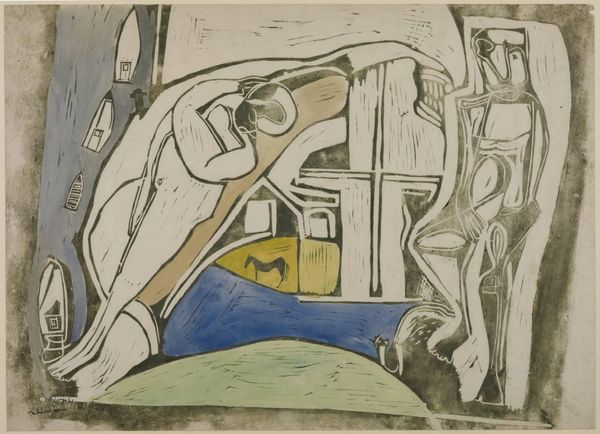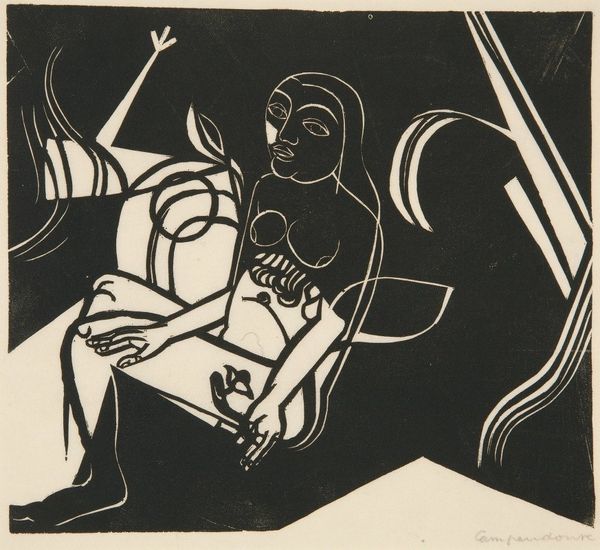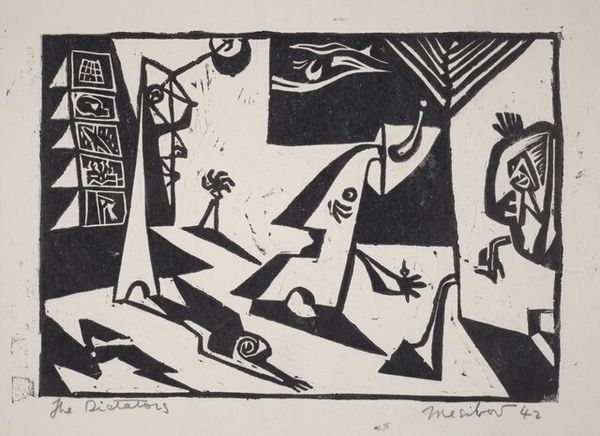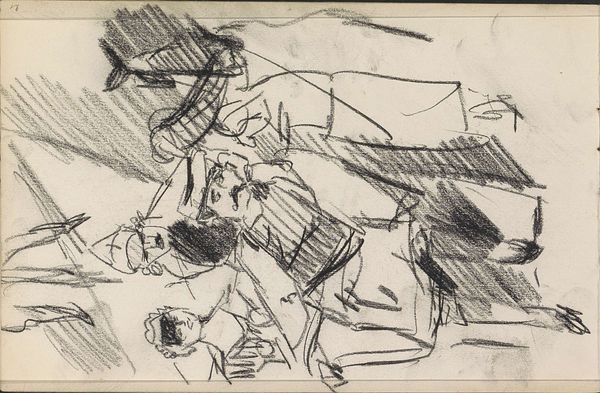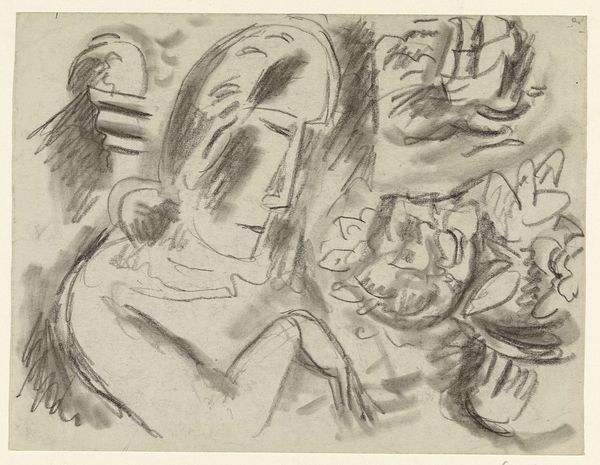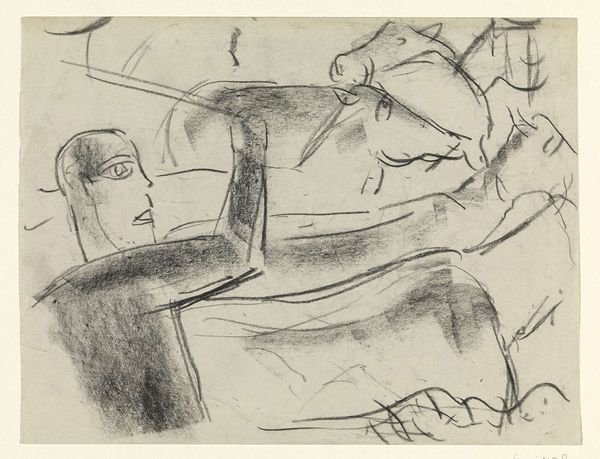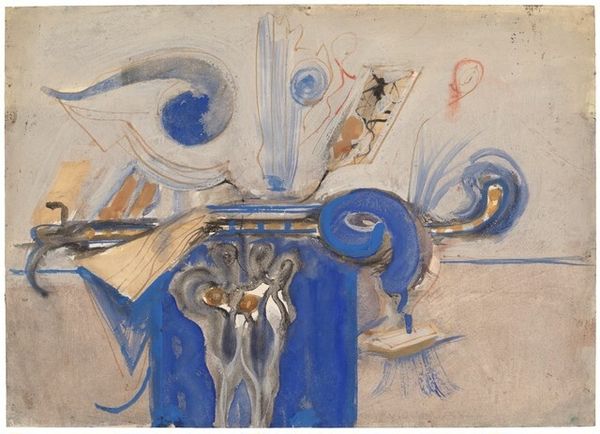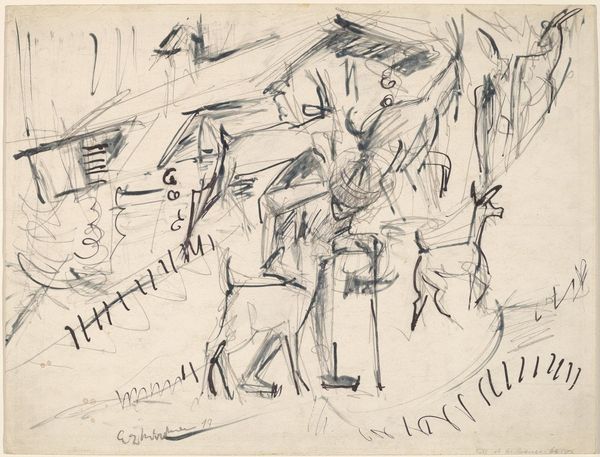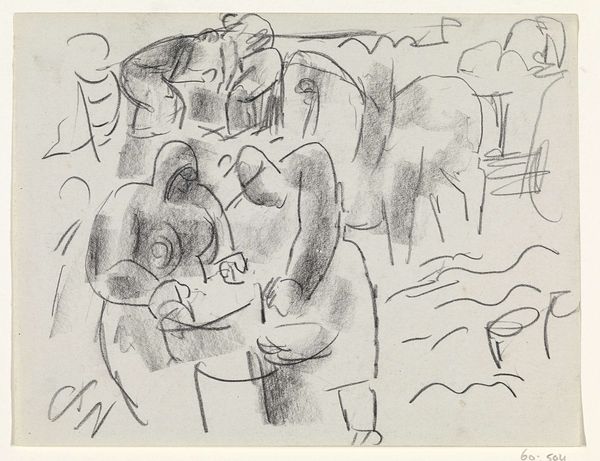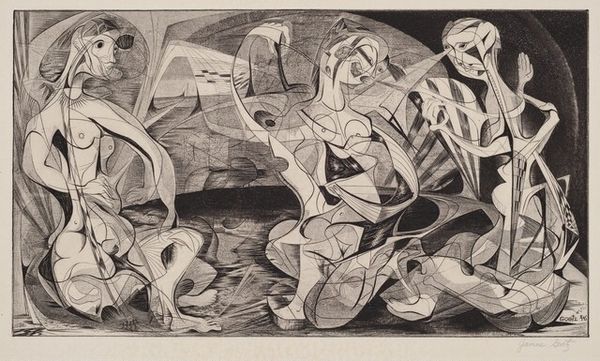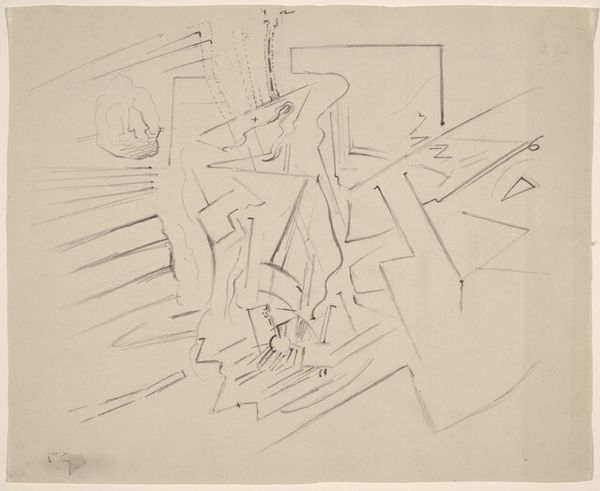
drawing, pencil
#
portrait
#
drawing
#
cubism
#
caricature
#
figuration
#
pencil
#
abstraction
#
portrait drawing
#
watercolour illustration
#
portrait art
Copyright: Public domain US
Curator: Wyndham Lewis's "Indian Dance," created in 1912, renders the human figure in pencil and watercolor through a Cubist lens. I find the fractured forms quite compelling. What catches your eye initially? Editor: I am drawn to the sort of rough-hewn nature of the medium, and it clashes intriguingly with the sort of "high art" associations of the dancers. The pencil marks are clearly visible, really emphasizing the artist’s hand. I wonder how that connects to its meaning? Curator: Consider the time. The early 20th century was ripe with industrial advancements. How do you think the materials – readily available, mass-produced pencil and paper – speak to this societal shift when viewed alongside this image of dance? Does it democratize the artistic process? Editor: That’s a cool angle. It feels like a challenge to traditional art making. Like, anyone could theoretically pick up a pencil and make something like this, right? It's not marble or bronze that only rich patrons could afford. Curator: Precisely. The accessibility of materials flattens the hierarchy between artist and audience, questioning who has the power to create and interpret art. Moreover, think about the social context. What commentary is Lewis making, implicitly, through his choice of materials here, versus, say, a more "traditional" academic medium like oil paints? Editor: Perhaps it's suggesting art doesn't need to be precious to be meaningful? Or maybe even highlighting the labor and process involved in creation, making it more about the act than the finished "perfect" product? Curator: Exactly. Lewis uses these commonplace materials to challenge the established order, shifting our focus to the act of creation itself and away from notions of artistic genius and timeless beauty. It’s about the doing, the making, and the social implications embedded within that process. Editor: This has really changed my view. I hadn't thought about the implications of the materials themselves, beyond just liking how they looked. It gives the piece so much more depth. Curator: Absolutely. By considering the means of production, the artwork reveals a narrative that’s often hidden within its visual elements.
Comments
No comments
Be the first to comment and join the conversation on the ultimate creative platform.


